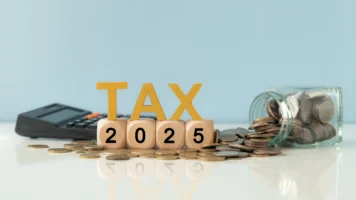Loans Against Cars: Everything You Need To Know
If life has thrown you a curveball and you’re needing extra funds to get you through, you might be thinking of taking out a loan. A loan against your car can be a way to access the money you need, even if you have bad credit. This handy guide will take you through everything you need to know about loans against cars, including the history, the application process and how you can still drive your car while borrowing against it.
This guide contains general advice only. If you’re unsure, you may want to seek personalised, professional support before making financial decisions.
Overview:
- What are loans against cars?
- Secured vs. unsecured personal loans: what’s the difference?
- What can I use a loan against my car for?
- Loan amounts
- Interest rates
- Application process
- Who is Swoosh Finance?
What are loans against cars?
A loan against a car (also known as a car title loan or an auto equity loan) is a type of secured personal loan that lets you borrow money by using your car as collateral. Unlike traditional car loans used to purchase a vehicle, these loans are based on the value of a car you already own. You retain ownership of the vehicle, and can usually continue to drive the car while repaying the loan. However, if you default on the loan, the lender has the right to repossess the vehicle to recover the outstanding debt.
It’s often a popular choice for borrowers who need quick access to funds and either:
- Own their car outright
- Are willing to use their car as security
- Might have limited credit options
A brief history of secured personal loans
The general practice of lending, including secured personal loans, goes back a long way—all the way to Ancient Mesopotamia! But it wasn’t until the 1990s when personal lending really took off in Australia.
Throughout the 1980s and 1990s, Australia’s financial sector underwent major deregulation, expanding the availability of credit and allowing non-bank institutions to enter the market. This led to greater consumer access to secured personal loans for a wider range of purposes, including debt consolidation, home renovations, and travel.
In the 2000s and 2010s, the rise of online lenders and fintech platforms transformed the personal lending landscape, making secured loans more accessible with faster application processes and broader eligibility criteria. These innovations allowed borrowers to secure loans using not only property or vehicles but also other assets.
Today, secured personal loans remain a popular option, with Australians borrowing close to $2.5 billion in fixed-term personal loans each month, according to the Australian Bureau of Statistics. Secured personal loans are regulated under the National Consumer Credit Protection Act 2009, which ensures responsible lending and consumer protection across the financial industry.
Secured vs. unsecured personal loans: what’s the difference?
When searching for the right loan for you, it’s important to understand the difference between a secured personal loan and an unsecured personal loan. Both have their benefits depending on your financial situation, what you’re using the loan for, and how much you need to borrow.
What is a secured personal loan?
A secured loan is backed by an asset, such as a car, which you use as collateral. One of the most common examples is a loan against a car, where your vehicle is used to secure the loan. Because the loan is tied to an asset, the risk for the lender is lower. That often means:
- Lower interest rates compared to unsecured loans
- Higher borrowing limits, depending on the value of the asset
- Better chances of approval for borrowers with lower credit scores
However, it’s important to remember that if you fall behind on repayments or default on the loan, the lender may have the legal right to repossess and sell the asset (such as your car) to recover the money owed.
What is an unsecured personal loan?
An unsecured personal loan doesn’t require you to put up any collateral. Instead, lenders may rely on your:
- Credit history
- Income
- Current financial situation
- Debt-to-income ratio
Because there’s no asset involved, unsecured loans generally carry higher interest rates, and you might not be able to borrow as much. They also typically have shorter loan terms than secured options.
Unsecured loans may be the preferred option for borrowers who:
- Don’t have assets to use as collateral
- Need funds quickly
- Prefer not to risk losing a valuable item if they can’t repay the loan
Which one is right for you?
Ultimately, deciding which option is right for you will depend on your individual circumstances and the terms and conditions of each lender. Before making any important financial decisions, ask yourself:
1. Do I have an asset I can (and am willing to) use as collateral?
If you own a car, boat or other valuable asset, you may be eligible for a secured loan. But think carefully about whether or not you’re comfortable putting that asset at risk if something goes wrong.
2. How much do I need to borrow?
Secured loans may let you borrow more, depending on the value of your asset. If you need a higher loan amount, this might be a better option.
3. How quickly do I need the money?
Unsecured loans are sometimes processed faster, but not always. Lenders like Swoosh offer fast approval and funding for secured loans too, so be sure to check lender turnaround times.
4. What’s my credit history like?
If your credit score isn’t great, a secured loan could improve your chances of approval, since the lender has added security. It’s a good idea to check your credit score before applying for any loans.
5. Can I afford the repayments?
Look at the interest rates and repayment terms for both loan types. Secured loans often have lower interest rates, which could make monthly repayments more manageable.
6. Am I comfortable with the risk involved?
With a secured loan, your asset could be repossessed if you fail to repay the loan. Unsecured loans don’t carry that risk—but they may cost more overall.
7. What is the purpose of the loan?
Some expenses (like home improvements or car repairs) may be more suitable for a secured loan, especially if you’re using the asset related to the loan. For smaller, short-term needs like medical bills or travel expenses, an unsecured loan might be enough.
8. What are the fees and terms for each option?
Compare application fees, interest rates, late payment charges, and loan lengths. Some lenders charge different fees based on the type of loan.
9. Will using my asset impact me in other ways?
If you rely on your car daily for work or family, consider how losing access to it (even temporarily) could affect you.
10. Have I compared offers from different lenders?
Rates and terms vary across lenders. Make sure to shop around. Some lenders, like Swoosh, offer secured loans with flexible features and fast access to funds.
What cannot be used as collateral for a loan?
Generally, lenders prefer collateral to be tangible, valuable, and easily liquidated, and must be legally owned by the borrower. Typically, depending on the lender, collateral for a personal loan may not include:
- Unregistered vehicles
- Clothing
- Low value household items, such as furniture or kitchen appliances
- Assets you don’t fully own, like leased cars or items with joint ownership
- Digital assets such as cryptocurrencies
- Intellectual property, including trademarks and patents
It’s always best to check directly with each lender to see what types of collateral they accept, as it can vary. At Swoosh, we keep things straightforward by using a vehicle registered in your name as security. This could be a car, motorbike or even a boat.
What can I use a loan against my car for?
A personal loan can be used for a wide range of purposes, offering flexibility to help you manage your finances. Whether you’re dealing with unexpected expenses, funding a major purchase, or consolidating debt, a personal loan can provide the financial support you need. It’s commonly used for things like:
- Unexpected expenses – like emergency medical bills, dental bills or urgent home repairs
- Debt consolidation – combine multiple debts into one easy-to-manage repayment
- Car service or repairs – keep your vehicle running smoothly
- Travel or holidays – fund your next getaway without dipping into your savings
- Home improvements – renovate, refresh or add value to your home
- Special events – such as weddings, anniversaries, or milestone birthdays
- Education or training – invest in your future with study-related costs
Lenders are required to ask what you intend to spend the money on during the application process. There aren’t many restrictions around use for small personal loans, so generally, as long as you intend the money for legal purposes, your reason won’t impact eligibility.
Loan amounts
Loan amounts for car-secured personal loans vary depending on the lender and the value of the vehicle being used as collateral. Most lenders will offer loans starting from around $2,000 and may go up to $15,000 or more, depending on factors like your income, credit history, and the condition and market value of the car. Newer vehicles that are fully owned and in good working order can often help you access larger loan amounts. However, just because you can borrow more doesn’t always mean you should. It’s important to only borrow what you need and can comfortably afford to repay.
At Swoosh, we focus on providing smaller, more manageable loan amounts between $2,200 and $5,000.
How much can I borrow?
How much you can borrow will depend on your individual circumstances, including:
- The value of your vehicle
- Your overall financial situation
- The lending and eligibility criteria of each specific lender.
Lenders generally offer up to a percentage of your car’s market value. But it’s important to remember that lenders must follow responsible lending laws, which means they’ll only approve loan amounts you can reasonably afford to repay.
At Swoosh, we’re committed to responsible lending and making sure our loans are the right fit for you. We carefully assess every application to make sure you can comfortably afford your repayments without added financial stress.
Interest rates
Some lenders offer fixed rates, meaning your repayments stay the same throughout the loan, while others may have variable rates that can change. Interest rates for loans against cars are often fixed and tend to be lower than interest rates for unsecured personal loans. This is because the car provides security for the lender, reducing the risk, allowing them to offer more competitive rates. However, the actual rate you’re offered can vary based on:
- Your credit history
- The value of your car
- Your individual circumstances such as income and any existing debts
- The lender’s own policies
When comparing interest rates between lenders, it’s important to always check the comparison rate. The difference between the interest rate and the comparison rate is that the comparison rate typically takes into account any fees or charges that come with the loan, giving you a clearer picture of the true cost of the loan.
At Swoosh and similar lenders, rates are usually fixed to make budgeting easier and repayments more predictable. As always, it’s worth shopping around and comparing your options to find the best deal for your circumstances.
Application process
With the introduction of online lending, the process of getting a loan against your car has become easier and faster than ever. However, the actual application process itself will vary from lender to lender and depend on your individual circumstances. There are a few general steps that you’ll encounter at some point in the application process with most lenders. Here’s a step-by-step guide to what you can expect:
1. Provide your personal and financial details
Generally, while filling out a loan application form, you will be asked to provide your basic information, including your contact details, employment status, and income.
2. Submit vehicle information
When applying for a secured personal loan using your vehicle as collateral, you’ll likely need to provide key details about your vehicle, such as the:
- Make
- Model
- Year
- Registration
- Whether it’s owned outright or under finance.
3. Upload supporting documents
Most lenders will ask for ID, recent bank statements, and payslips to check that you can comfortably afford the repayments. It’s a good idea to have these ready before you apply for the loan to ensure your application goes through as quickly and smoothly as possible.
4. Get assessed
The lender will review your application, including the value of your vehicle and your ability to repay the loan.
5. Review and accept your offer
If approved, you’ll receive a loan agreement to read through and accept, usually electronically. It’s important that you review the lending contract carefully, reading all the terms and conditions, before accepting the offer.
6. Receive your funds
Once everything’s signed, the funds are transferred straight to your bank account, often within one hour or up to two business days. If options like PayID are available, you should be able to receive the funds immediately after transfer.
Lenders like Swoosh aim to keep this process fast, flexible, and completely online—making it easy to apply from the comfort of home.
Who is Swoosh Finance?
We’re a trusted Aussie lender helping people access fast, fair, and flexible finance. With easy online applications, quick approval, and a commitment to responsible lending, we help you get the funds you need when you need them!
At Swoosh, we don’t let your past define your future. Whether you’ve had a few bumps in the road or just need fast funds to keep moving forward, we’re here to help. We offer tailored loan products, transparent terms, and friendly customer service from real humans based right here in Australia. Apply online today.









